AUSTRALIA is blessed to have a number of airbrush artists regarded as masters of their craft. Little Mick, John Evans, Peter ‘Devo’ Davidson, Wayne Harrison and Perry Mallet are a few names that spring to mind, and although their individual styles may differ, they all cite Frank Lee as their inspiration.
Frank’s been creating for most of his 83 years and has dabbled in many artistic media, but he’s best known for his panel van work in the 70s and early 80s, when he was the go-to guy for a custom paint job in Sydney. Many high-end vans of the era featured his artistic stylings, with Alley Cat, Invader 2001 and Pat Fay’s FJ hearse among his most prominent work.
His success and reputation through these glory years has him firmly entrenched as an icon of the panel van era, but when Van Wheels chatted to him, we discovered there is far more to Frank’s legacy than just loving renderings of the female form on the sides of a custom van.
Here’s our interview with Frank from earlier this year:
SM: Were you a keen artist from a young age?
Frank: Oh yes. My mother said I was drawing in the sand before I could hold a pencil! I was born in Warialda in country NSW, but my ‘official’ start in the art world didn’t begin until 1939. We moved to Sydney and Mum later took me to an art school in the old Darlinghurst jail to sit an entrance test. I passed with flying colours and was told that I had a very rare drawing ability, especially for my age. I went every Saturday morning for a number of years and loved it.
So what did you like to draw as a young bloke?
World War II was in full swing, so it was all about war scenes and the army. Military influences were everywhere in daily life so there was plenty of inspiration.
At 16 I left school and went to work for a printing firm, where we used to design dockets and letterheads. As a young guy I was restless and wanted to try other things, so I travelled around a bit and settled in the country where I worked on sheep stations and dairy farms.
After the war, the world was changing and you could just walk in anywhere and get a job. I was even a junior gunsmith at one stage.
You’re also a very accomplished automotive spray painter; how did you get a start in that world?
In the early 1950s I did a traineeship and was working back in Sydney doing full resprays in nitrocellulose lacquer. Acrylic was introduced around 1960 and I spent most of my painting career doing prestige work on the likes of Rolls-Royce, Mercedes-Benz, Porsche and Lamborghini.
Being from an artistic background helps immensely as a spray painter. It gives you an edge when it comes to colour-matching panels, especially on the more exotic vehicles.
Did you have much experience using an airbrush?
I’d been fascinated with the airbrush since the late 40s, and eventually bought one in the early 50s. I had a real hard time painting with it but was trying to use it for watercolours and the like, which just didn’t work. They were commonly used for editing photographs and doing newspaper touch-ups back then, and even exploded views of components were drawn that way.
So how did you end up using the airbrush for automotive art?
I was working at Capitol Motors as a painter and my workmates knew that I was into airbrushing but struggling to get the most out of it with the water-based paint. We decided to try the ‘new’ acrylic automotive paint, and it was like the floodgates opened [laughs]. From then on I was airbrushing at every opportunity and covered the workshop walls in large landscape murals, and would do portraits.
I’d never thought about doing murals on cars until the son of furniture magnate Keith Lord came in one day wanting Indians painted over his Nissan Patrol.
That sounds like perfect timing with the onset of the panel van era.
I airbrushed my first panel van in the early 70s, and it really kicked into gear over the next few years. John Strachan’s Alley Cat helped put my work on the map and I did a number of pieces on that van throughout its different builds.
I worked it as a sideline business for a few years, before going into it fulltime in 1977, opening Frank Lee Custom Painting at Hornsby.
The artwork on John’s van created a lot of interest, with the six-legged tiger known as a ‘banth’.
It’s crazy, that tiger mural is still debated over today. I’ll read an article where it says that I got the proportions wrong, or that it was a mistake, or that I couldn’t count, but it is all just silly gossip.
What were the biggest influences on the van work you did during that time?
The fantasy genre was by far the biggest influence and went hand-in-hand with the panel van scene. The artwork of Frank Frazetta was really popular so it was all about warriors, mythical creatures and big-breasted princesses.
Well, you do have a bit of a reputation for including topless women in your murals!
It was what people wanted [laughs]. I was at a car show many years ago and there was a bloke checking out a mural I’d done to one of the vans. He turned to his mate and said: “That’s a Frank Lee nipple!” That’s when I knew I’d hit the big time [laughs].
Seriously though, I always made sure that my nude or semi-nude art was done in a tasteful manner. I did knock back a request from one guy who wanted me to airbrush a pair of lesbians going for it hammer-and-tong; it wasn’t my thing, and even more so because he was describing it in great detail in front of his young daughter.
I won’t paint anything that I’m not comfortable with. A bloke once asked me to paint an Ayers Rock scene with a baby hanging out of a dingo’s mouth; that kind of work is definitely not for me.
Which of your automotive murals are you most fond of?
I liked Pat Fay’s FJ. I think it was some of my best work. The Dracula was based on actor Christopher Lee’s version in the 1958 film, and the theme worked in nicely with the graveyard scene and bitten girl on the tilt front.
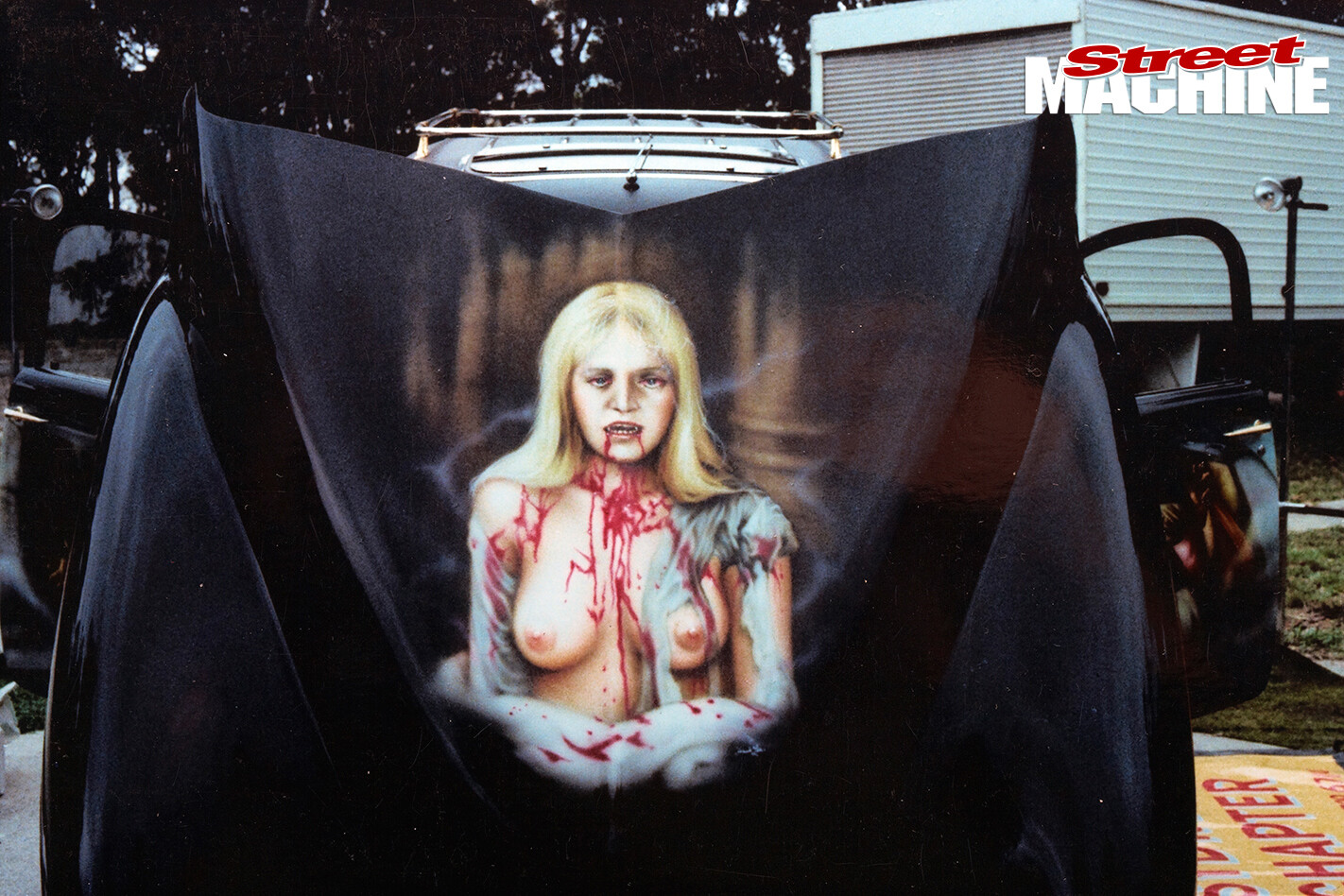 I remember having Pat’s hearse in my workshop and the coffin was sitting out on the bench; a girl came in and asked what the coffin was for. I casually said: “That’s where I take my afternoon nap. Doesn’t everyone do that?” And she freaked out [laughs].
I remember having Pat’s hearse in my workshop and the coffin was sitting out on the bench; a girl came in and asked what the coffin was for. I casually said: “That’s where I take my afternoon nap. Doesn’t everyone do that?” And she freaked out [laughs].
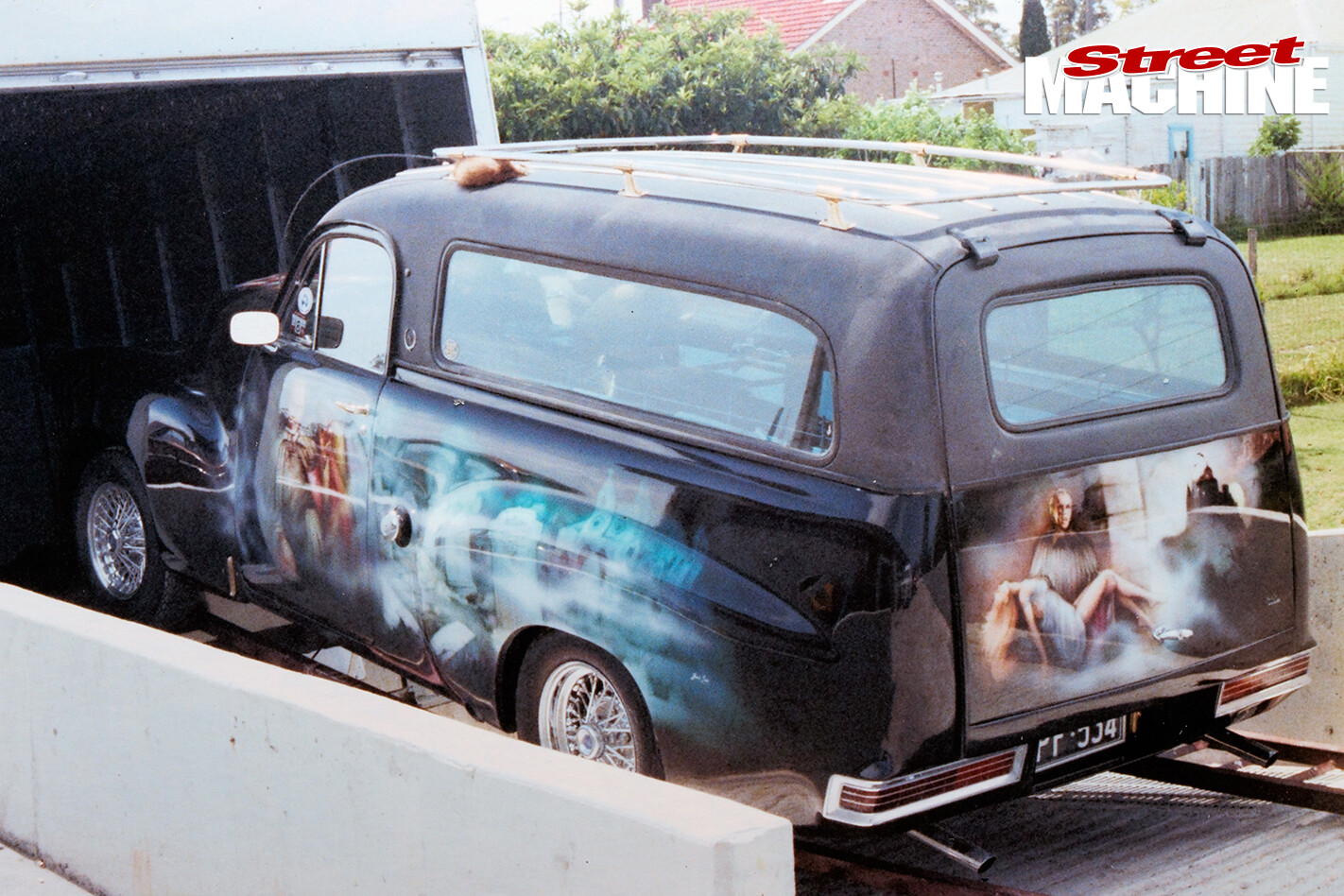 Frank chose the Christopher Lee-acted 1950s Dracula for Pat Fay’s FJ murals as he says it tied in perfectly with the era of the FJ
Frank chose the Christopher Lee-acted 1950s Dracula for Pat Fay’s FJ murals as he says it tied in perfectly with the era of the FJ
Did you build any cars of your own?
I had a Holden ute as a work vehicle, which I painted from front to rear as a rolling advertisement. The custom side of it came together quite by accident.
Guys would be changing or upgrading parts of their own cars and would offer me their hand-me-downs – it ended up with a Statesman front end, sidepipes, and mags, so it really looked the part.
When the van scene died out in the mid-80s, where did you focus your artistic energies?
Motorcycles. I painted a heap of Harley Davidsons and accessories. I can paint skulls in my sleep [laughs]. There was one guy known as the ‘X-Ray Racer’ and I painted his full leathers like a skeleton using a flexible leather paint, and of course did a skull helmet to match.
I continued with custom painting and won the inaugural Glasurit Australia ‘Golden Gun’ award in 1987, where I literally received a gold-plated spraygun as first prize.
What’s the most unusual vehicle you’ve painted?
Definitely the Renault Twingo back in the mid-90s. A French journalist drove it around Australia with a camera crew and covered 17,000km. They took it everywhere, including Cape York, and tackled river crossings; it was unbelievable.
Renault were keen to have it painted and tracked me down at Sydney Tech where I was teaching airbrushing part-time. It was an indigenous art piece created by the Balarinji Design Studio, who are responsible for the Qantas planes; I painted the complete car in a similar fashion and it was shipped back to Paris and put on display in the Renault Museum.
Your retired back in 1992, but do you still dabble in airbrushing, or art in general?
People still come to me to have work done. It’s mainly motorbikes and the occasional hot rod, and I’ve been asked to re-mural the rebuild of Alley Cat once it’s ready. These guys better hurry up though; I’m 83 so might cark it at any time [laughs].
I still enjoy the challenge of airbrushing and there’s nothing like trying to airbrush on a chrome surface with your own reflection staring back at you.
I still love to paint and draw, and have always sketched when travelling, whether it be overseas or locally. The Australian outback and Kakadu areas are made up of some amazing colours from an artistic perspective.
I also enjoy painting ‘working’ landscapes – dairy farms, timber mills, old barns, things like that. I have a sentimental attachment to these places as it takes me back to my younger years of working on the land.
You were inducted into the Majestic Vanners Legends Hall of Fame back in 2011 and have been honoured with displays in Sydney’s Powerhouse Museum and the Heide Museum of Modern Art in Melbourne. How does it feel to have your work so fondly regarded and remembered by such a broad fanbase?
It’s very humbling to say the least. I’ve met some amazing people and made lifelong friends through the art world, many of whom were from the panel van era. It was a great time in our car history and I feel honoured to have been amongst it. Vans mean a lot to me and have been a huge part of my career.
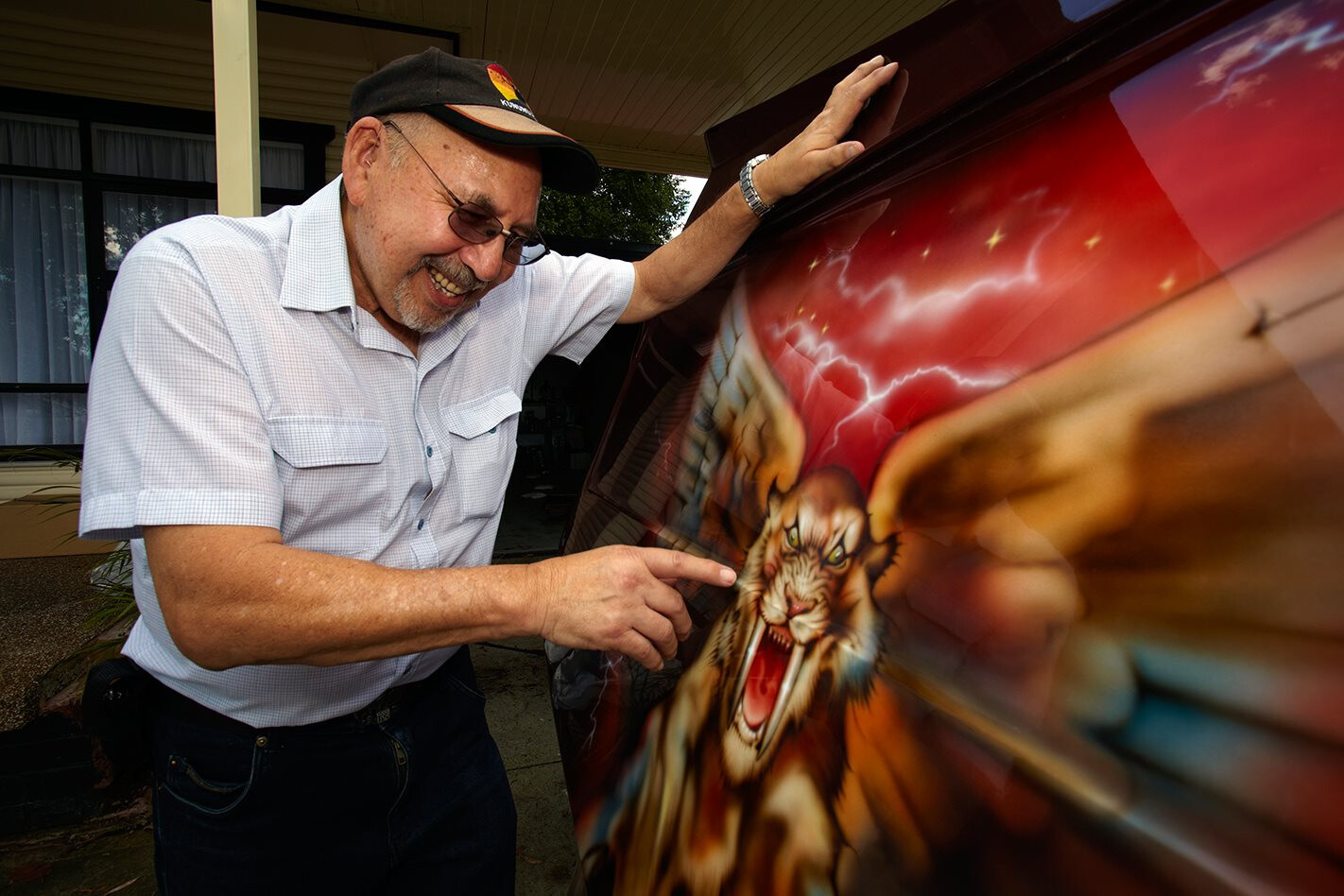
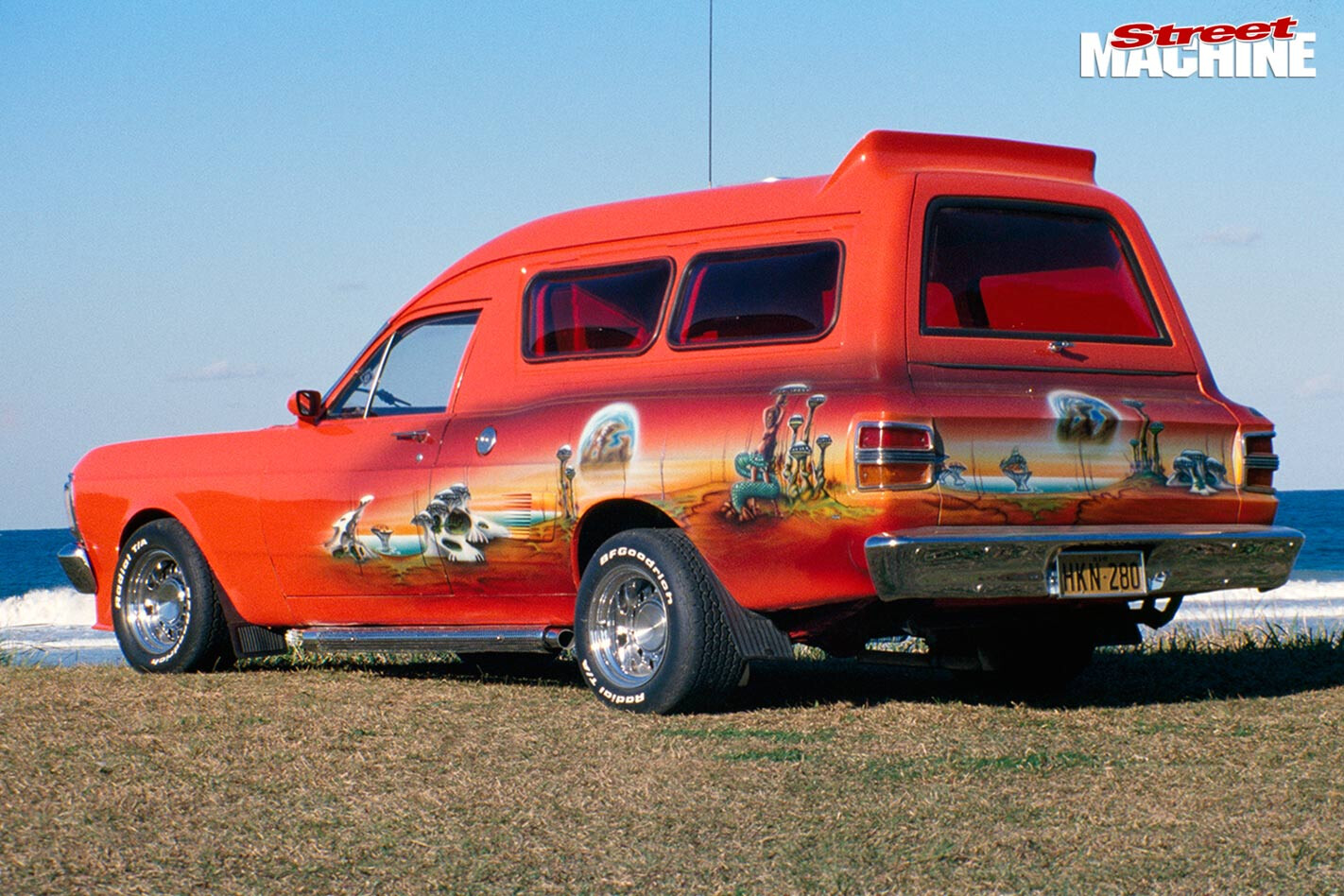
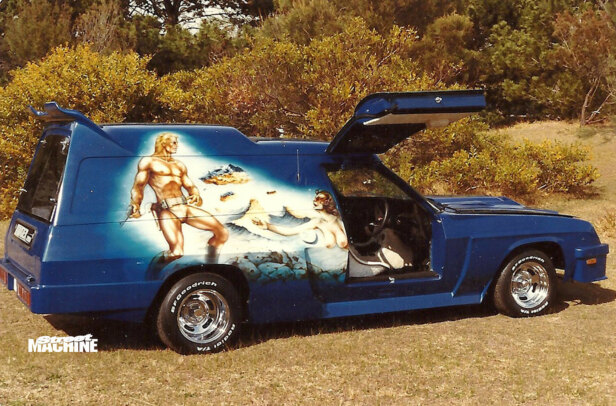
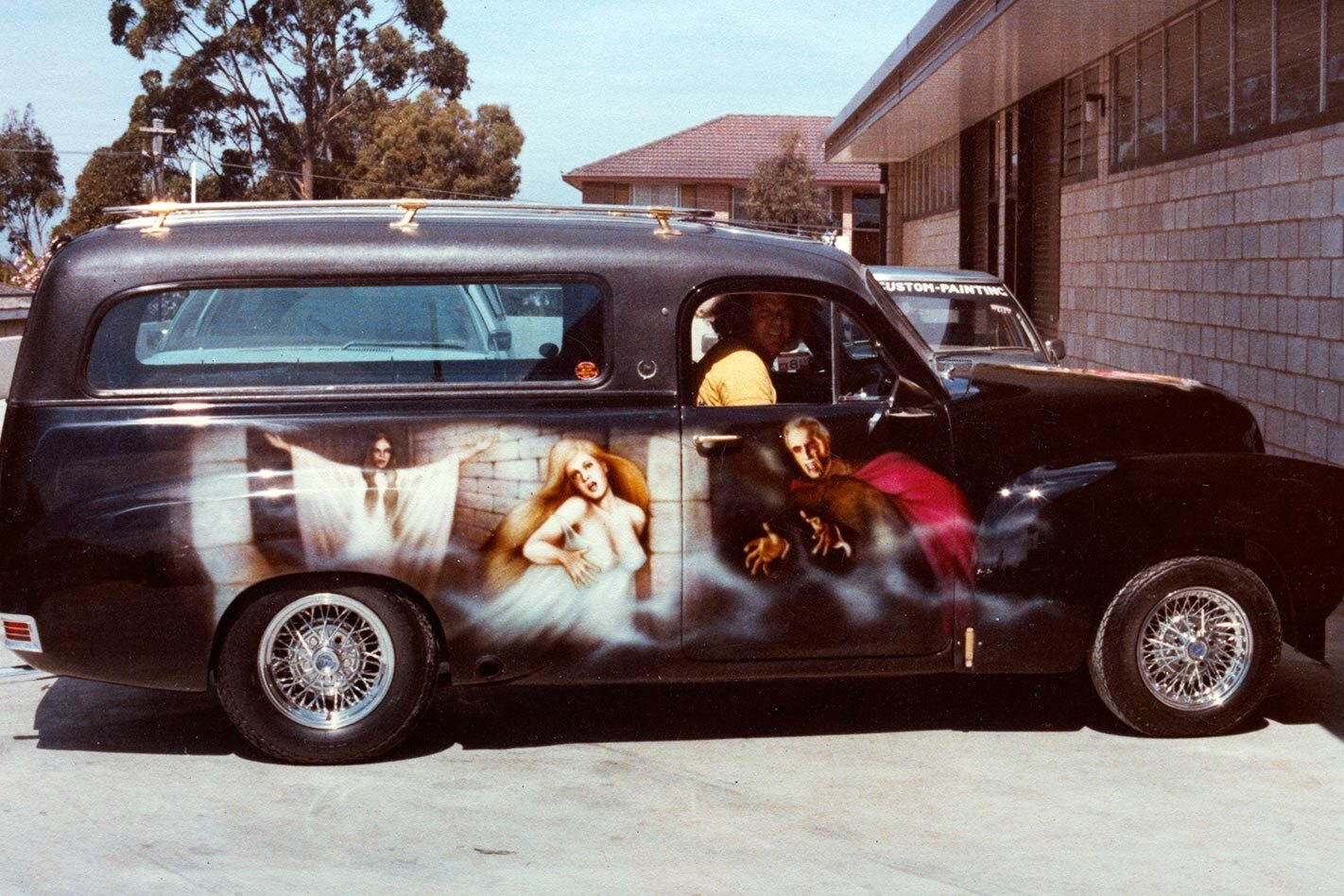
Comments